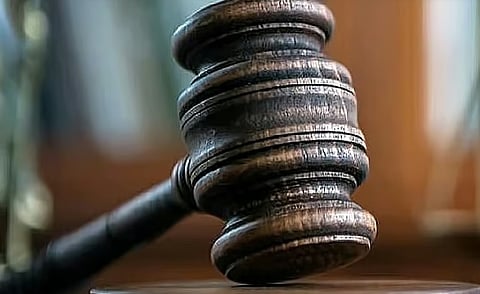

The National Green Tribunal (NGT) on April 23, 2025, directed the Jammu & Kashmir Pollution Control Committee (JKPCC) member secretary to examine whether the 19 mineral blocks operating along the Vishaw river, a tributary of the Jhelum, are operating with proper environmental clearance and following environmental norms. The next report should also disclose the blocks’ environmental compliance, the court said.
In the original application, registered suo motu, the tribunal was examining the grievance of a deteriorating trout population in the Vishaw stream due to rising pollution and unregulated mining activities.
The Central Pollution Control Board (CPCB) filed the report dated April 21, 2025, enclosing the inspection report of the JKPCC, disclosing the status and impact of illegal mining on the Vishaw.
Of the 19 mineral blocks, all located in the Kulgam district, 11 are operating without valid consent from the JKPCC under the Air Act, 1981 and Water Act 1974, the report said.
Most of the minor mineral blocks are witnessing mining operations. There are earth movers, tippers and tractors that are extracting boulders and other materials from the leased mining areas. The leased mining area has not been demarcated with a boundary.
There are large heaps/mounds of mineral and pits/trenches in those areas of the riverbed where mining is being carried out. These have disrupted the natural flow of water and also has changed the route of the water at many places.
“Illegal and unscientific mining is occurring, which is detrimental to the health of the river ecosystem particularly disrupting the natural flow and course of water that creates unsuitable condition for the growth of aquatic fauna,” the report said.
It also revealed that samples were collected from different locations in the Vishaw. The lower course of the stream, i.e., Kudwan (near bridge) and Niyana, was comparatively inferior compared to the upstream in terms of total and faecal coliforms, the sample analysis showed. This can be attributed to the addition of agricultural runoff, untreated wastewater, and solid waste to the water body.
The Supreme Court (SC), April 16, 2025, directed the authorities to visit the protected monument Quila Rai Pithora, Saidulajab village, Delhi and ascertain if illegal constructions have taken place near the monument.
If the authorities find that illegal constructions are in existence, due process of law should be forthwith initiated for removal of the constructions/structures. When the authorities visit the site, the Commissioner of Police, Delhi should ensure that adequate protection is provided to them.
The court gave three months to complete the exercise and place on record, a comprehensive report regarding the existence of illegal structures and action initiated for their removal.
The application stated that Quila Rai Pithora has been notified as a protected monument by a notification dated March 4, 1918, the SC noted.
The applicant has pointed out that in view of Section 20A of the Ancient Monument & Archaeological Sites and Remains Act, 1958, every area beginning from the outer limit of the protected monument extending up to a distance of 100 metres is a “prohibited area”.
Moreover, Section 20B of the 1958 Act, states that every area beginning from the outer limit of the prohibited area of the protected monument extending up to a distance of 200 metres is a “regulated area”. Private persons are, therefore prohibited from constructing in these places. These aspects should be taken into consideration by the concerned authorities, the order said.